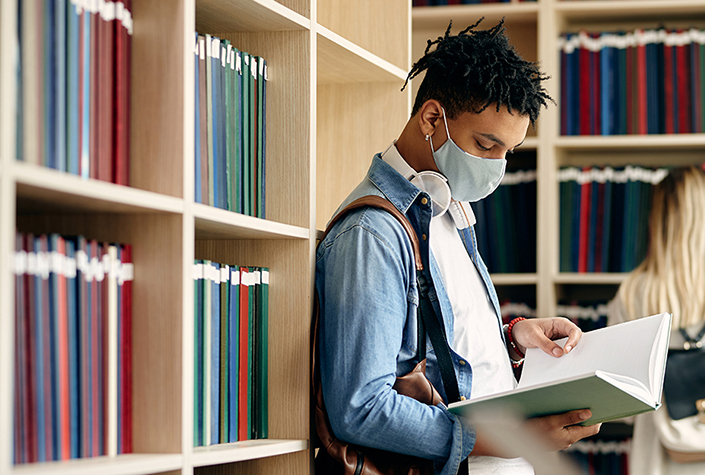Who is more likely to catch COVID-19: A college student or a non-student?

College athletes and non-athlete college students may be less likely to contract COVID-19 than young adults in the general public, according to a new JAMA Open Network commentary co-authored by Texas A&M University School of Public Health’s Rebecca Fischer and Benika Dixon, and Louisiana State University School of Public Health’s Catherine O’Neal.
The article, titled “College athletic programs thwart the spread of SARS-COV-2 during the COVID-19 pandemic,” was published online on February 9, 2022.
This commentary extends research about college athletics and COVID-19, which began at the start of the coronavirus pandemic. At that time, many questioned whether student athletes could safely participate in college athletics. These athletes often compete near each other, make physical contact, have increased respiration, share equipment and facilities, and travel together over long distances—all of which can increase transmission rates.
Because of this risk for increased exposure, the National Collegiate Athletic Association (NCAA) recommended in the fall of 2020 that athletic programs adopt aggressive protocols, including regular testing, isolation and quarantine, and contact tracing. These recommendations were designed to monitor, mitigate and manage infections and transmission.
In accordance with these recommendations, the member schools of the Southeastern Conference (SEC) implemented protocols that required athletes to take three COVID-19 tests weekly. If athletes tested positive, they were required to observe quarantine. Because of this intensive protocol, there was a very low chance that an infected athlete would go undetected.
Additionally, football players wore state-of-the-art proximity technology that assisted with contact tracing. This technology allowed officials to identify athletes on both football teams, as well as athletic staff and others who were near a contagious athlete. These individuals were advised of the potential transmission and were asked to quarantine, public health measures known to limit spread of the virus.
Using data from the SEC’s 2020 football season, Fischer, Dixon and O’Neal collaborated with Hongwei Zhao, School of Public Health, and James Clugston, University of Florida’s College of Medicine, to analyze COVID-19 transmission.
“We were very curious to see if college football players were on the field passing COVID back and forth to each other,” said Fischer, an assistant professor in the Epidemiology and Biostatistics Department.
In that JAMA Network paper, “Contact, SARS-CoV-2 infections among college football players during games,” the co-authors found that SEC football players were not transmitting COVID-19 to each other because they were not around each other for longer than 15 minutes during the entire game. In most instances, there was momentary contact before players moved in other directions. “Even if someone was on the field and tested positive, they weren’t passing COVID-19 around,” Fischer said.
Based on their work, Fischer, Dixon and O’Neal were invited to develop the JAMA commentary, which is based on JAMA’s recently published research entitled, “Comparison of SARS-CoV-2 test positivity in NCAA Division 1 student athletes vs nonathletes at 12 institutions.” This study, which used publicly available data from colleges and universities about their student rates of COVID-19, found that athletes had a 50 percent reduction in risk in getting COVID-19 over college students who were not athletes.
“While it was a very simple analysis, what stood out to me was that yes, our college athletes actually fared better in terms of COVID-19 test positivity than their classmates who were not in athletic programs,” Fischer said.
The researchers also looked at COVID-19 data for young adults in the general population. In comparing this information with the data from the study on college athletes and non-athlete students, the researchers found that the athletes and non-athlete students had lower rates of COVID-19 infection than other young adults in the nation during the same period. The percentage of positive COVID-19 tests results among U.S. young adults between the ages of 18-24 increased from 7 percent to approximately 17 percent from August through December 2020. In comparison, the highest positivity among college athletes was 0.8 percent while for college non-athlete students it was 6.6 percent.
This finding suggests that college students do not place themselves in a riskier situation by being on campus.
“There was this overwhelming assumption by parents, the public and school administrators that we’re sending students to college, and since they have to go to class together, we’re going to have more infections in that setting,” Fischer said. “We observed in this analysis that there were a variety of protection schemes. The more frequently the university promoted testing resulted in a lower risk to those students.”

